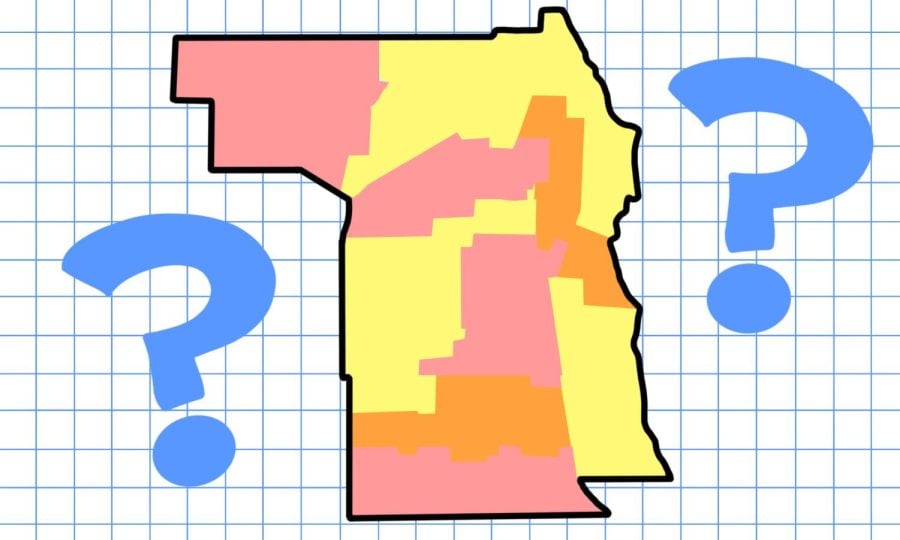The Daily Explains: Evanston’s redistricting process
File illustration by Olivia Abeyta
Evanston’s Redistricting Committee started soliciting feedback on how to change the city’s ward lines in May. It plans to submit potential maps to City Council after April’s municipal election.
January 5, 2023
Evanston City Council is in the process of redrawing the city’s nine wards to ensure each contains roughly the same number of residents.
The council began redistricting in May when it formed a four-person committee to speak with community members and examine potential boundaries. The committee will finish speaking with residents of each ward by the end of January and aims to present potential maps to City Council after this year’s city elections in April, according to Ald. Jonathan Nieuwsma (4th), Redistricting Committee chair.
The other committee members are Ald. Melissa Wynne (3rd), Bobby Burns (5th) and Devon Reid (8th).
After City Council discusses and approves a map, the new district boundaries will take effect during the 2025 municipal elections.
Why did City Council decide to redistrict?
City Council last redrew ward boundaries in 2003. But between the 2000 and 2020 census counts, Evanston’s wards showed uneven population growth.
Due to the “one person, one vote” principle established by federal courts, the council must equalize the wards’ populations so every resident’s vote for their councilmember counts equally.
According to the 2020 Census, the average ward in Evanston has 8,679 residents. But Evanston’s 3rd Ward is significantly larger, with 9,691 residents, while the 9th is smaller, with 7,920 residents.
That means the difference between Evanston’s largest and smallest wards exceeds the maximum allowed by the 1973 U.S. Supreme Court case Mahan v. Howell.
What are City Council’s top considerations?
The Redistricting Committee’s main priority is to equalize the populations of each ward. It also aims to change current boundaries as little as possible to preserve neighborhoods and other “communities of interest.”
Additionally, the committee will work to ensure that the three majority-minority wards in Evanston — the 2nd, 5th and 8th — continue to represent a majority of people of color. This consideration prevents minority votes from being diluted across too many wards.
It will also attempt to maximize the number of wards that represent downtown Evanston because of its economic significance.
Committee members have also discussed avoiding new lines that favor their reelections. Wynne said at the June committee meeting that she wants to ensure the new boundaries neither advantage nor disadvantage sitting councilmembers. Meanwhile, Nieuwsma has agreed with that principle but told The Daily that councilmembers will inevitably consider incumbent advantage when redistricting in practice.
How might redistricting affect me?
For residents living near ward borders, the redistricting may change which councilmember represents them on City Council starting in 2025. Affected residents will vote in their new wards during that election.
The ward redistricting process will not change other administrative regions in Evanston, like school district boundaries or tax increment funding districts.
How can I get involved in the redistricting process?
The Redistricting Committee will hold two more ward-specific meetings: one for the 1st and 3rd Wards on Jan. 10 and another for the 5th Ward on Jan. 26. At each meeting, the committee invites community members from those wards to give feedback, then discusses potential changes to ward lines. The meetings specific to all other wards have already taken place.
All residents will also be able to comment at City Council meetings prior to the map’s approval, once the proposed boundaries are presented later this year.
Email: williamtong2026@u.northwestern.edu
Twitter: @william2tong
Related Stories:
— Redistricting Committee discusses 6th and 7th Wards at Tuesday meeting
— Evanston Redistricting Committee discusses need for community engagement in planning meeting



